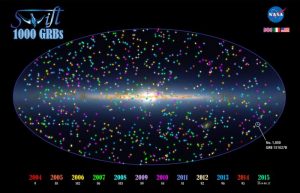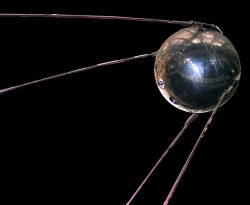The Discovery Of Gamma-Ray Bursts
Gamma-Ray Bursts are the single, most violent events in the universe! Ironically these are one of the hardest events in the universe for us to witness. The discovery of these was purely coincidental and after their research, we now know so much about them and how rare they are to spot.
How were Gamma-Rays Discovered?
It was the peak of the Cold War, the United States and USSR were determined to bring each other down. The contention started with each side creating and testing nuclear weapons. At the same time, both sides were excelling in space travel and launching space satellites that would spy on each other. Most importantly was the concept of testing and launching nuclear missiles in space. So the question emerged, how would the U.S. know if the USSR was doing this?
Scientists built a spacecraft called Vela capable of detecting nuclear detonations. Vela specifically looked for the high energy pulse of gamma-rays which is a product of nuclear detonations.
The Vela-5A/B Satellite in its cleanroom. The two satellites, A and B, were separated after launch.
Scientists Roy Olen and Ray Klebesadel, assigned with watching the data brought in by these satellites, finally got the first positive signal of a gamma-ray pulse on July 2, 1967. However, the data showed that the fading of the gamma-ray radiation was significantly different from that of a nuclear bomb. After a couple of years, more of these gamma-ray bursts were detected. With the development of technology, it was also theorized they were coming from deep space but the telescopes were still not fast enough to determine exactly where these bursts were actually coming from. The gamma bursts were happening at random all over the sky, creating an even bigger challenge for astronomers to determine what was causing them. For decades, this became the most enduring mystery in astronomy.
In 1997, the Dutch-Italian BeppoSAX spacecraft was fast enough to get a reasonably close location to the burst. Scientists were able to view the fading of the gamma-ray bursts. Through more observations, scientists found out these bursts of energy were billions of light years away and in order to be able to detect them meant the burst must be immensely powerful!

Scientists thought black holes could be the source of the gamma-ray bursts, but given the distance observed through the telescopes and their brightens, a black hole created by a supernova could not generate enough power to be a gamma-ray burst, or so they thought. Astronomers then theorized that if the energy blasting outward from a supernova could be focused into a beam then that could explain a gamma-ray burst.
What is a Gamma-Ray Burst?
A gamma-ray burst happens when a very massive star explodes with even more energy than a supernova, these are called a hypernova. In the moment of the explosion, matter blasts out of the star and a beam of gamma-ray bursts out in opposite poles.
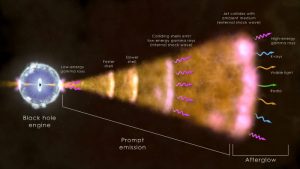
We know what happens during a hypernova but we can only imagine how it actually looks up close. Telescopes can only see that stars brighten up and then dim away for, lasting only a couple of minutes. Additionally, we can only detect bursts when the gamma-ray beam is aimed at us, we miss out of many more bursts aimed away from us. Their distance and short duration make them one of the hardest events to witness in the universe.
Difference Between Short and Long Gamma-Rays
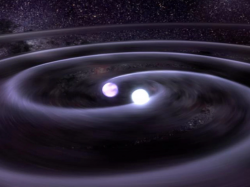
There are two types of gamma-ray bursts, long and short. These are determined by the duration of the burst. Long Gamma-Ray bursts come from hypernovae explosions. These last more than two seconds and with several smaller spikes of energy.
On the other hand, short gamma-ray bursts last only milliseconds and are caused by the explosive merging of a binary start. A binary star is comprised of two neutron stars orbiting each other at super fast speeds. When they finally merge or collapse into each other, a back hole is created. Matter and energy blasts out of the collision, creating two gamma-rays out of the opposite ends of the black hole in focused beams.
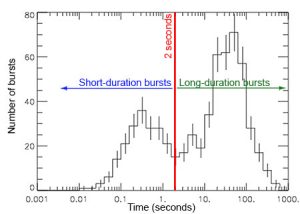
Most Recently
In 2004 NASA’s spacecraft Swift detected its first burst. Swift is much faster at determining the position of the gamma-ray bursts. By November 2015, Swift detected its 1000th gamma-ray burst. Since then many more telescopes look at the sky studying gamma-ray bursts.
